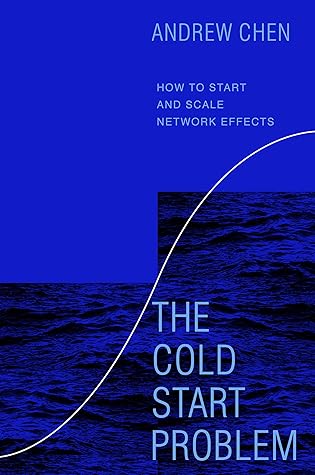More on this book
Community
Kindle Notes & Highlights
Zoom is a networked platform that has both a killer product and the mechanisms to build the network around it. They are intertwined, in a way where one reinforces the other.
Networked products are fundamentally different from the typical product experience—they facilitate experiences that users have with each other, whereas traditional products emphasize how users interact with the software itself. They grow and succeed by adding more users, which create network effects, whereas traditional products grow by building better features and supporting more use cases.
It’s why products like Twitter and Zoom and others often seem so simple, and are critiqued as “features not products” that seem trivial at first. They have one magical core experience. Contrast this to traditional products, which often win the “checkmark contest” bake-offs common in enterprise software purchases, but lose in the contest of actual product engagement from their end users.
When the product concept and value is simple to describe, it makes them easier to spread from user to user, much like the “meme” coined by noted biologist Richard Dawkins in one of my favorite books, The Selfish Gene. You can copy and paste a Zoom link—it’s just that easy.
It’s rare to see patents or even deep intellectual property as part of the core strategy. In fact, when I meet with consumer startups, an entrepreneur bragging about patents is a turnoff.
Uber’s app was initially outsourced to Mexico, so that when later engineers joined the company, they needed to be issued Spanish-to-English dictionaries to understand the comments and source code.
In other words, the ideal product to drive network effects combines both factors: The product idea itself should be as simple as possible—easily understandable by anyone as soon as they encounter it. And at the same time, it should simultaneously bring together a rich, complex, infinite network of users that is impossible to copy by competitors.
It feels like a paradox that many of the most valuable products in the world have a business model that emphasizes “free.” Social networks and communication apps are free, and SaaS products tend to be freemium. Marketplace companies are free to browse and use, though obviously buying services or products cost money.
This strategy of making Zoom a freemium business meant it was easier for the network to grow. Offering a free tier is a recurring theme for many networked products: some are ad-supported (as video and social media platforms are), others have premium features unlocked by subscription (as with more workplace/B2B products), and others are powered by microtransactions (as with marketplaces, games, and livestreaming platforms).
New technologies allow for new customer behaviors. There are new interface paradigms, like swiping or tapping with your finger, that allow for new product ideas. This creates a mad scramble among big companies and startups alike—in the great reset driven by a new technology shift—to figure out what people want and quickly build the next killer
These computing shifts bring us some of the most obvious new killer products. When the smartphone arrived with a high-resolution camera, built-in location, and the App Store, we got a long string of hits like Snapchat, Uber, and TikTok. When the web came along, we got the search engine, ecommerce, marketplaces, and more. The era of Windows and Macintosh computers brought us Office, desktop publishing, and a slew of use cases for the personal computer. In other words, when there’s a new platform shift, the companies that build the killer products often create some of the most valuable companies
...more


